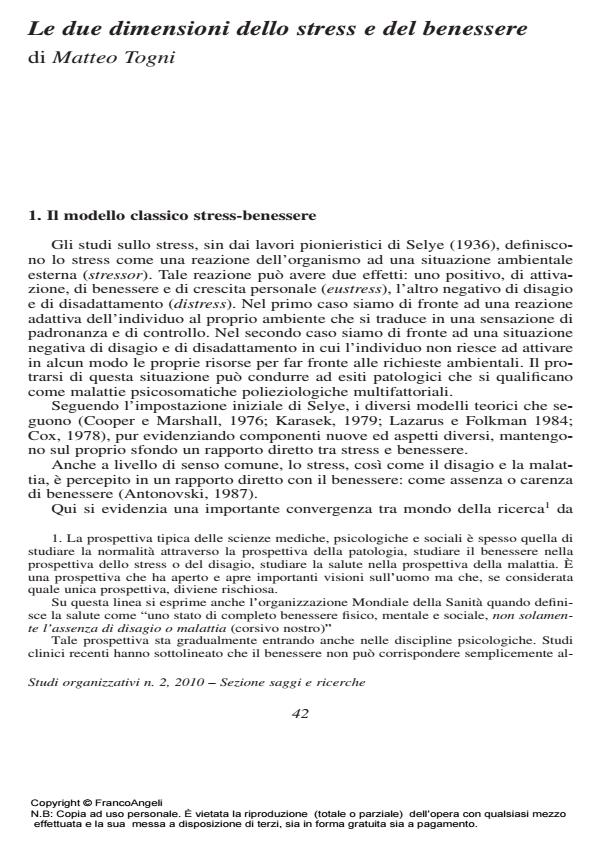The two dimensions of stress and well-being
Journal title STUDI ORGANIZZATIVI
Author/s Matteo Togni
Publishing Year 2011 Issue 2010/2
Language Italian Pages 13 P. 42-54 File size 787 KB
DOI 10.3280/SO2010-002002
DOI is like a bar code for intellectual property: to have more infomation
click here
Below, you can see the article first page
If you want to buy this article in PDF format, you can do it, following the instructions to buy download credits

FrancoAngeli is member of Publishers International Linking Association, Inc (PILA), a not-for-profit association which run the CrossRef service enabling links to and from online scholarly content.
The aim of this work is to analyze the Classical theoretical models based on the relationship between stress and well-being with a special focus on some limits of interpretation, concerning short and long term learning processes. Furthermore, this study underlines the possibility that stress and well-being coexist. Classical theories, are based on monodimensional models which set reality along a continuum from stress to well-being. This work suggests that stress and well-being are independent of each other, for this reason a bidimensinal model is argued. Each dimension may be located in a bipolar scale (eustress vs. distress; well-being vs. malaise). Interaction between the two creates a new interpretative map of their relationship Only in exceptional situations interaction between stress and well being may follow ways mentioned in Classical studies. In normal situation the two coexist alternating in time and social space. As suggested in many studies, between stress and well-being there is a low correlation. Bidimensional model gives a theoretical frame to understand this relationship and help to explain events and situation of life as individual, group or organization.
- Il contesto organizzativo ed il mobbing: verso un'"organizzazione trasparente" Caterina Muzzi, in STUDI ORGANIZZATIVI 1/2018 pp.64
DOI: 10.3280/SO2018-001003
Matteo Togni, Le due dimensioni dello stress e del benessere in "STUDI ORGANIZZATIVI " 2/2010, pp 42-54, DOI: 10.3280/SO2010-002002